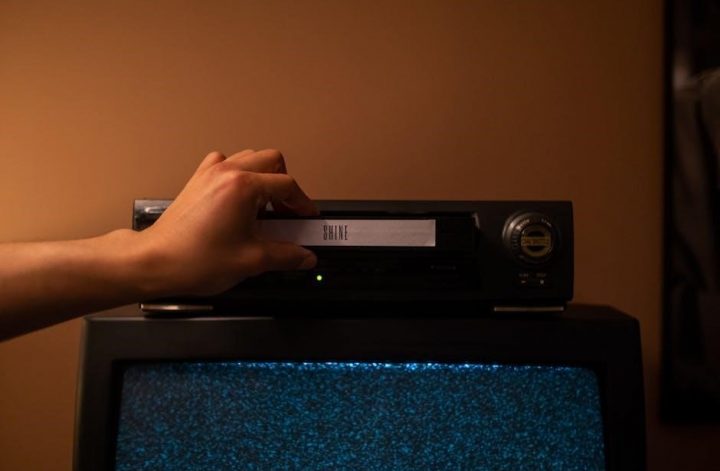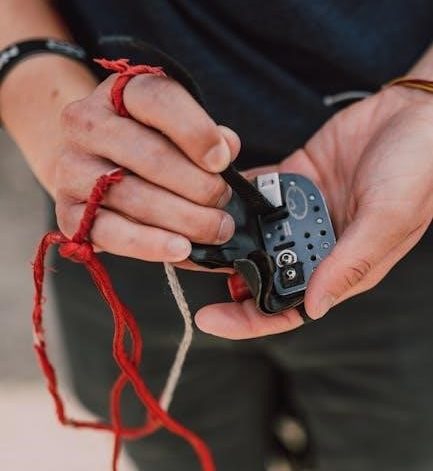The BMW E46 manual swap is a popular conversion among enthusiasts, offering enhanced driving engagement and reliability. This guide outlines the process, benefits, and considerations for a successful swap.
Overview of the E46 Manual Transmission Swap
The E46 manual transmission swap is a popular modification among BMW enthusiasts, offering enhanced driving engagement, reliability, and performance. This process involves replacing the automatic transmission with a manual unit, such as the Getrag 250G or ZF GS6-37BZ, and includes essential components like the clutch assembly, flywheel, and wiring harness. The swap requires careful planning, mechanical expertise, and attention to electrical modifications for seamless integration.
Why the BMW E46 is a Popular Choice for Manual Swaps
The BMW E46 is a popular choice for manual swaps due to its exceptional performance, handling, and reliability. Enthusiasts are drawn to its engaging driving experience, enhanced control, and the robust support from a vibrant community. With a wide range of available parts and a reputation for durability, the E46 offers a cost-effective way to optimize performance and driving enjoyment, making it an ideal candidate for manual transmission conversions.

Reasons for Converting to a Manual Transmission
Enhanced driving experience, improved control, and increased reliability are primary reasons for a manual swap, offering better performance and a more engaging connection to the vehicle.
Enhanced Driving Experience and Control
Converting to a manual transmission in the E46 offers a more immersive driving experience, providing direct control over gear shifts and throttle response. Drivers can enjoy precise acceleration and a sportier feel, enhancing engagement behind the wheel. This conversion restores the car’s original driving dynamics, making every drive more enjoyable and rewarding.
Improved Reliability and Longevity
Manual transmissions typically have fewer complex components than automatics, reducing the risk of costly repairs. This makes them more reliable and easier to maintain over time. The E46 manual swap is particularly beneficial for older models, as manual transmissions are known for their durability and simplicity. This conversion is a smart investment for enthusiasts seeking a more robust and long-lasting driving experience.
Cost-Effectiveness and Performance Gains
Manual transmissions are generally more cost-effective than automatics, requiring less maintenance and repairs over time. The E46 manual swap eliminates torque converter lag, delivering quicker acceleration and crisper throttle response. This results in improved performance and a more engaging driving experience. Additionally, the swap often proves to be a smart long-term investment, as manual transmissions are typically more durable and require fewer costly repairs.

Essential Parts and Components for the Swap
The E46 manual swap requires a transmission, clutch assembly, flywheel, shifter linkage, and wiring harness. These components ensure proper mechanical and electrical functionality for a successful conversion.
Transmission Options: Getrag 250G and ZF GS6-37BZ
The Getrag 250G is a reliable 5-speed transmission ideal for earlier E46 models, offering simplicity and durability. The ZF GS6-37BZ, a 6-speed unit, provides closer gear ratios for performance-oriented drivers. Both transmissions are compatible with the E46, catering to different preferences and ensuring optimal performance and driving experience based on model year and driving style.
Clutch Assembly, Flywheel, and Pedal Box
The clutch assembly, flywheel, and pedal box are critical components for the E46 manual swap. A manual-specific clutch pedal assembly, including master and slave cylinders, ensures proper hydraulic pressure. The flywheel must be compatible with the new transmission, and the pedal box connects the clutch pedal to the master cylinder. Proper installation ensures smooth gear engagement and a responsive driving experience.
Wiring Harness and Electrical Components
The wiring harness and electrical components are essential for integrating the manual transmission into the E46’s systems. Modifications include removing the EGS module and adjusting circuits for the clutch switch and reverse light. Proper wiring ensures the manual transmission functions correctly, with signals for the clutch and shifter. Custom harnesses or adapters may be needed, and careful testing is essential to prevent electrical issues.

Step-by-Step Installation Process
The E46 manual swap involves a detailed, sequential process, starting with removing the automatic transmission and replacing it with the manual assembly. Proper installation requires careful alignment and connection of components, including the clutch, flywheel, and wiring harness. Testing each system ensures functionality and a smooth transition to manual operation.

Removing the Automatic Transmission
Begin by disconnecting the battery and draining fluids. Detach the driveshaft and exhaust system for access. Unbolt the automatic transmission from the engine, carefully lowering it with a jack or lift. Remove the torque converter and shifter assembly, then disconnect wiring harnesses, including the EGS module. Store all components securely for later replacement, ensuring no damage to surrounding systems.
Installing the Manual Transmission Assembly
Align the manual transmission with the engine mounts and secure it using bolts. Reconnect the driveshaft and shifter linkage, followed by the clutch slave cylinder and flywheel. Install the clutch pedal assembly and reconnect the wiring harness, ensuring the reverse light and clutch switches function properly. Test the shifter operation to confirm smooth gear engagement before finalizing the installation.

Wiring and Coding Considerations
Remove the EGS module and rewire the clutch switch and reverse light circuit. Code the DME to recognize the manual transmission, ensuring proper functionality and avoiding errors.
Removing the EGS Module and Rewiring
Begin by disconnecting the battery to prevent electrical issues. Locate the EGS module near the brake master cylinder and gently remove it. Rewire the clutch switch and reverse light circuit, ensuring all connections are secure. This step eliminates automatic transmission functions and prepares the system for manual operation, allowing the car’s computer to recognize the new setup.
Coding the DME for Manual Transmission
Coding the DME is essential for manual transmission recognition. Disconnect the battery, then use BMW-specific software (e.g., ISTA/D or INPA) to update the DME. This process ensures the engine computer acknowledges the manual setup, eliminating error codes. Proper coding prevents issues like false limp mode or incorrect throttle responses, ensuring seamless integration of the manual transmission with the engine and other systems.
Common Pitfalls and Troubleshooting
Common issues include differential compatibility, clutch alignment, and wiring errors. Proper troubleshooting ensures smooth operation, addressing gear ratio mismatches and hydraulic system leaks for optimal performance.
Differential Compatibility and Gear Ratio Matching
Ensuring differential compatibility and proper gear ratio matching is crucial for optimal performance. The Getrag 250G and ZF GS6-37BZ transmissions have specific gear ratios that must align with your E46’s differential. Mismatched ratios can lead to poor acceleration, uneven wear, and reduced efficiency. Correct matching enhances performance, especially for engines with varying power outputs and driving styles, ensuring smooth and responsive operation.
Clutch Alignment and Hydraulic System Issues
Clutch alignment and hydraulic system problems are common challenges in E46 manual swaps. Misaligned clutch components can cause poor engagement, while air in the hydraulic system leads to a spongy pedal. Proper bleeding of the clutch master and slave cylinders is essential for consistent operation. Ensure the clutch pedal assembly is correctly installed to avoid mechanical failure and maintain smooth gear engagement during driving.

Community Support and Resources
Online forums and local communities provide invaluable support for E46 manual swaps. Enthusiasts share DIY guides, troubleshooting tips, and expert advice, ensuring a smoother conversion process and successful outcome.
Online Forums and DIY Guides
Online forums like Bimmerforums and Reddit offer extensive resources for E46 manual swaps. DIY guides provide detailed step-by-step instructions, while community members share personal experiences and troubleshooting tips. These platforms are invaluable for enthusiasts, offering expert advice and real-world solutions. They cover everything from parts selection to coding, ensuring a well-informed and successful swap process for all skill levels.
Local Communities and Specialist Mechanics
Local BMW communities and specialist mechanics provide invaluable hands-on support for E46 manual swaps. Car clubs, meetups, and forums connect enthusiasts with experienced individuals who offer practical advice and assistance. Specialist mechanics bring expertise, tools, and knowledge, ensuring complex tasks like wiring and installation are executed flawlessly. Their collaboration fosters a supportive environment, helping enthusiasts achieve a successful and stress-free swap.
Maintenance Tips Post-Swap

Regular clutch and gearbox checks ensure smooth operation. Fluid changes and system monitoring prevent wear. These practices maintain performance and prevent unexpected issues.
Regular Clutch and Gearbox Checks
Regular inspections of the clutch and gearbox are crucial for maintaining smooth operation; Check the clutch pedal for proper engagement and inspect the gearbox for any signs of wear or leakage. Fluid changes and monitoring the system ensure optimal performance and prevent premature wear. Addressing issues early avoids costly repairs and keeps the transmission running smoothly.
Fluid Changes and System Monitoring
Regular fluid changes are essential for maintaining the health of your manual transmission. Use the correct type of transmission fluid to ensure optimal performance and reduce wear. Monitor the system for leaks and wear, and check fluid levels regularly. Early detection of issues can prevent costly repairs and keep your transmission running smoothly for years to come.
Cost Estimation and Budgeting
The E46 manual swap involves costs for transmission, clutch, and wiring. Labor fees add to the expense, with total estimates varying based on components and DIY approach. Hidden costs include tools and fluids.
Parts and Labor Costs
The E46 manual swap requires significant investment in parts, including the transmission, clutch, and wiring harness. Labor costs for professional installation can range from $1,000 to $2,000, depending on complexity. Transmission options like the Getrag 250G or ZF GS6-37BZ cost between $1,500 and $3,000. Additional components, such as the pedal box and flywheel, add $500 to $1,000, making the total expense substantial but rewarding for enthusiasts.
Hidden Expenses and Long-Term Savings
While the initial cost of an E46 manual swap can be high, hidden expenses include labor for custom wiring, potential differential upgrades, and unforeseen repairs. However, long-term savings emerge through reduced maintenance needs and improved fuel efficiency. Manual transmissions are generally more durable, lowering repair costs over time and making the swap a cost-effective choice for dedicated enthusiasts.

Case Studies and Success Stories
Real-world examples showcase enthusiasts successfully converting their E46s, enhancing performance and reliability while increasing their vehicle’s value and driving satisfaction through detailed accounts of their journeys.
Real-World Examples of Successful Swaps
Enthusiasts have successfully converted their E46s to manual transmissions, achieving enhanced performance and reliability. Many used the Getrag 250G or ZF GS6-37BZ, with detailed DIY guides and forums aiding the process. These real-world examples highlight the feasibility and benefits of the swap, showcasing improved driving dynamics and increased vehicle value through personal accounts and shared experiences.
Lessons Learned from Experienced Enthusiasts
Experienced enthusiasts emphasize proper component compatibility and precise wiring adjustments as critical for a smooth E46 manual swap. They stress the importance of detailed planning, thorough research, and professional guidance to avoid costly mistakes. Successful swaps often involve meticulous preparation and leveraging community knowledge to ensure optimal performance and reliability post-conversion.

Future Modifications and Upgrades
Post-swap, enthusiasts often explore engine and suspension upgrades to further enhance performance. Additional modifications like lightweight components or aerodynamic improvements can refine the E46’s dynamics and aesthetics.
Engine and Suspension Upgrades
Engine upgrades, such as cold air intakes or engine chips, can boost power and efficiency. Suspension improvements like coilovers or sway bars enhance handling and stability. Upgrading bushings and aligning camber further optimizes performance, ensuring a refined yet sporty driving experience tailored to the E46’s capabilities after the manual swap.
Interior and Exterior Enhancements
Interior upgrades like sport seats, steering wheels, and trim enhancements refine the cabin. Exterior modifications, such as aerodynamic body kits, lightweight wheels, and LED lighting, improve aesthetics and performance. These upgrades complement the manual swap, enhancing both driving experience and visual appeal, making the E46 a standout vehicle for enthusiasts seeking style and functionality.
The E46 manual swap offers a transformative driving experience, blending enhanced control, reliability, and performance. It’s a rewarding project for enthusiasts, delivering unparalleled satisfaction and connection to the road.
Final Thoughts on the E46 Manual Swap
The E46 manual swap is a transformative modification that enhances driving engagement, reliability, and performance. It restores the car’s original intent, offering a more immersive experience. Enthusiasts who undertake this project gain a deeper connection to their vehicle, experiencing the thrill of precise control and sporty dynamics. The satisfaction of a successful swap is unparalleled, making it a rewarding endeavor for BMW enthusiasts.
Encouragement for Future Enthusiasts
The E46 manual swap is a rewarding project that transforms your driving experience. Embrace the challenge and enjoy the satisfaction of restoring your car’s true potential. With proper planning and community support, this swap is achievable and incredibly fulfilling. Join the ranks of enthusiasts who’ve enhanced their connection to their vehicle, and discover the joy of driving in its purest form.



